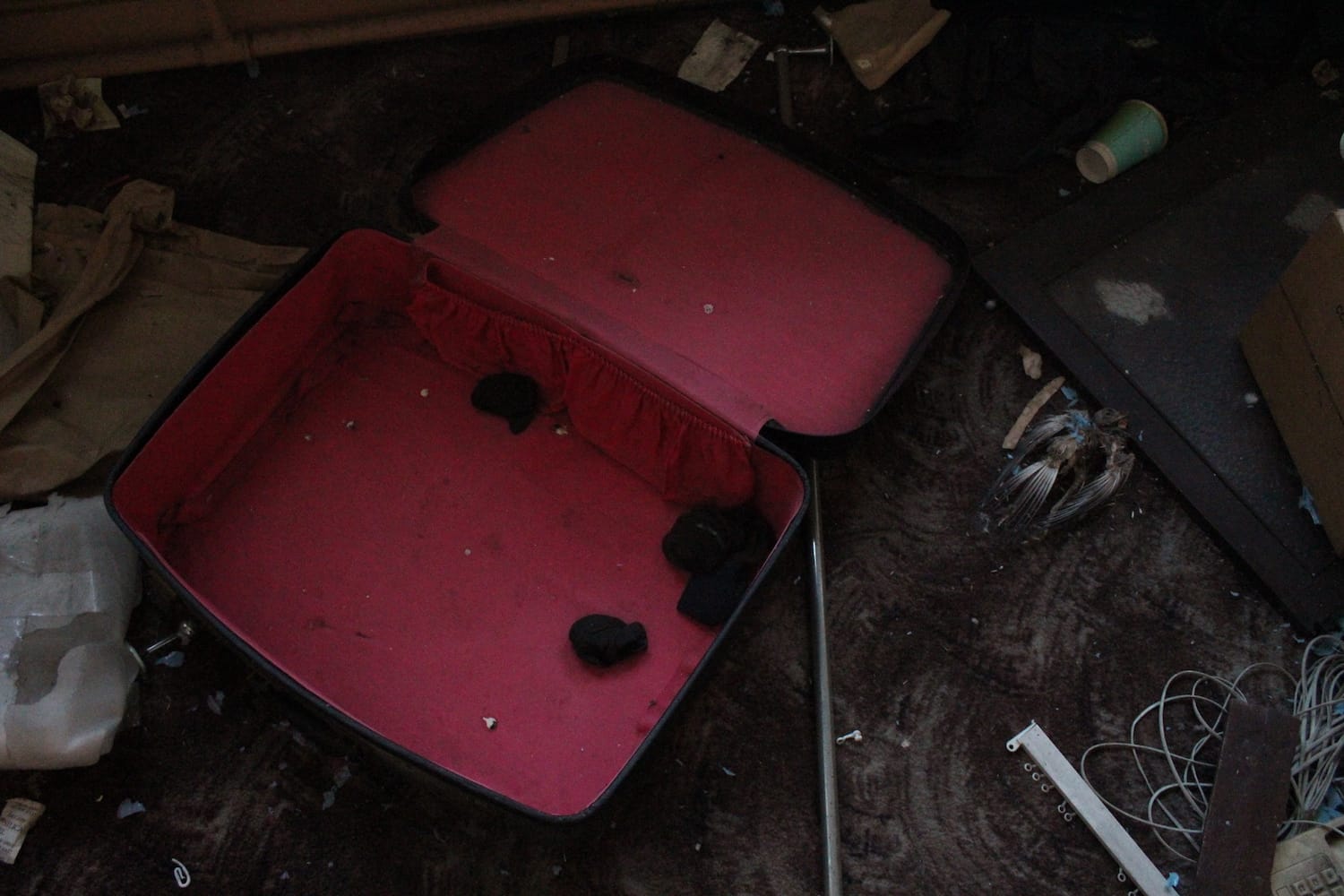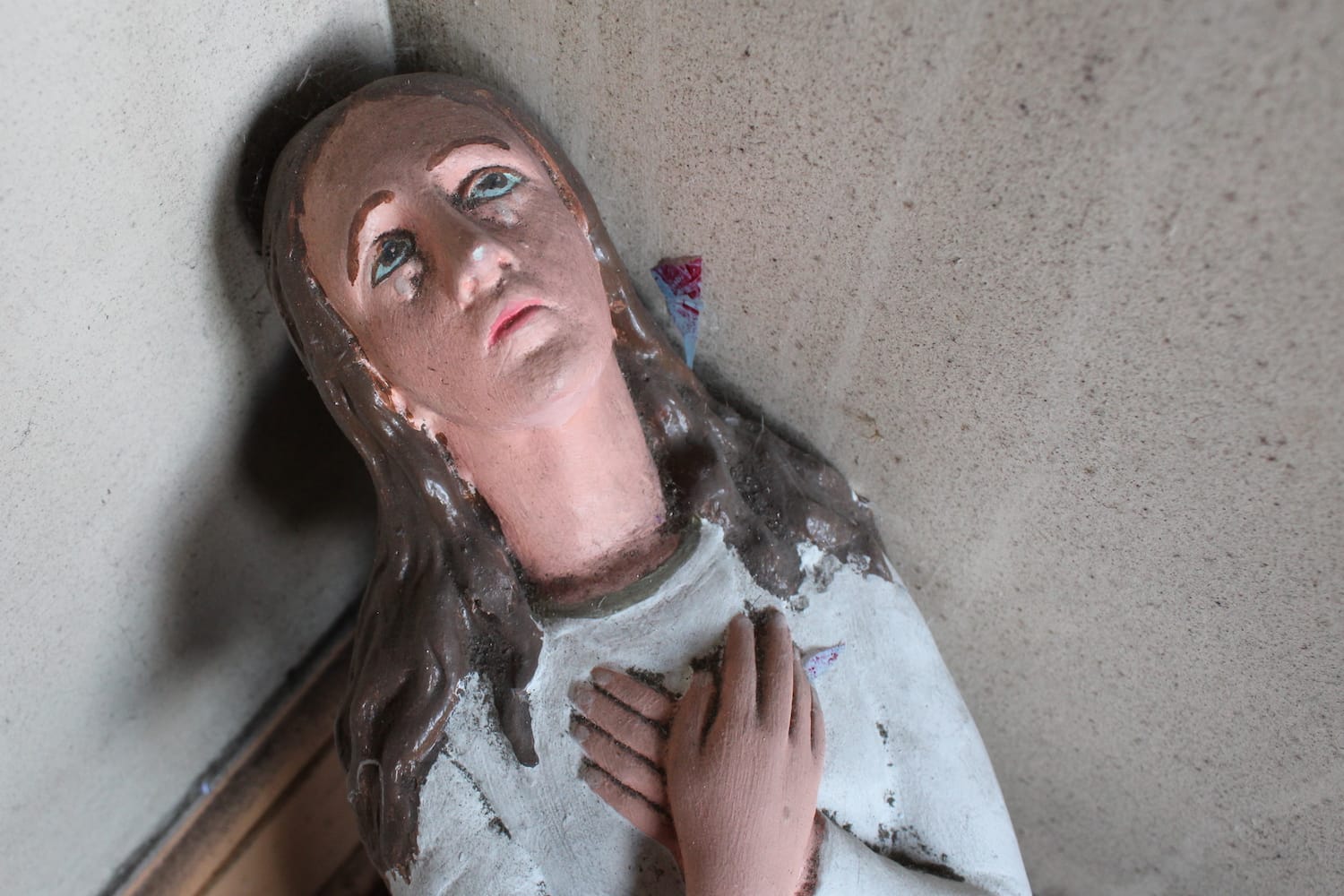What would become of the Civic Offices on Wood Quay if the council relocates?
After The Currency reported the idea of the council moving its HQ, councillors were talking about and thinking through the pros and cons and implications.
The students, academics and architects behind Open Heart City have researched and mapped the site – before pitching diverse ideas for how it could be developed.

Tattered paint peels from the deep-red walls. Rolled-up carpets gather dust.
At the end of the hallway, an almost life-size crucifix hangs crookedly. It is damaged, broken and in this effigy of Jesus, his eyes are closed.
That image is captured in one of the photographs taken by architecture student André Goyvaerts, inside the former Magdalene laundry on Sean McDermott Street.
Goyvaerts used video as well as photography to archive the interior of the laundry, to encapsulate it as it currently stands, he says.
His intention was to get “emotive shots that really convey certain aspects of the atmosphere”, he says.
The atmosphere was daunting, he says. “It is extremely grim. This is a place that is not comfortable to be in, something has happened here.”
Goyvaerts is one of 45 architecture students at University College Dublin involved in a project called Open Heart City, researching and mapping the site and pitching diverse ideas for how it could potentially be developed.
Dublin City Councillors rejected plans to sell the council-owned site to a hotel company in 2018. Since then, there has been no agreement on what should be done with it.
Now the Open Heart City, a collective of academics and architects, hope the students’ work can kickstart a public engagement process that, eventually, will lead to a new agreed plan.
The Magdalene Laundry on Sean McDermott was the last in the country to close, shutting its doors in 1996.
In 2013, then Taoiseach Enda Kenny promised to provide a permanent memorial to the Magdalene laundries, as many survivors had asked for.
Justice John Quirke conducted a review in 2013 and recommended that the former laundry site on Sean McDermott Street should be used for a memorial. It could be a garden or museum, he suggested.
Then, in 2018, Dublin City Council managers announced their plans to sell the site to a Japanese hotel firm, although they said the new owners were happy to facilitate a memorial there too.
The sale was ultimately rejected by Dublin’s councillors, who have the final say on whether or not to sell land.
Now the Open Heart City group wants to facilitate a wide-reaching public engagement process.
This would help bring together the views of the survivors of the institutions, local residents and community representatives with other key stakeholders, says Katherine O’Donnell, of Justice for Magdalenes Research and the Open Heart City.
They have funding to build a pavilion on the laundry site, where they had planned to do an exhibition of their work, she says.
But like much else these days, social distancing is getting in the way.

“Our idea was to have an open pavilion which would be a trigger point for public discussion,” she says.
At the pavilion exhibition, they want to display the best of the students’ work – videos, maps, photographs and designs – and provide architects to talk to people and to listen to what the public wants, she says.
The exhibition will go ahead as soon as the rules for public events are loosened, she says. In the meantime, in the coming weeks, they plan to start to publish their work online.
The student projects are speculative and the aim is public engagement, says O’Donnell. “To spark people’s own imagination and wish list.”
As well as the local community, the other key stakeholders are the survivors of the laundries, says O’Donnell.
She was involved in organising the Dublin Honours Magdalenes event in 2018, which consulted 147 survivors of the laundries, she says.
Organisers brought the women together around 26 tables and taped the conversations at 24 of those tables. All of those tapes have now been transcribed, culminating in 1,576 pages of text, she says.
“What came out super strong there was education,” she says.
The women want their experiences to be included in the school curriculum “so that we learn from what happened to the Magdalenes”, says O’Donnell.
Many of the survivors would like to see the Sean McDermott Street site used for educational purposes and a museum, she says.
Many of them also spoke about the welfare of those who are currently marginalised in institutions. Several specifically mentioned direct provision, she says.
Community representatives in the North Inner City have called for a site of conscience to be built on the site.
Last January, local Dublin City Councillors agreed to support plans for an educational facility, housing for older people and a commemoration on the site.
But there are no concrete plans at the moment.
Mary Laheen, assistant professor of architecture at UCD, supervised the work of 45 architecture students who were involved in drawing up ideas for potential uses for the site.
There were as many ideas as there were students, she says.
Student Maighread McGinley’s idea was to restore the chapel and provide an outdoor performance space. Helena McFeely’s vision is to turn the site into an extensive community garden, green space and market.
Eleanor Brady suggests leaving the building to decay and fall into ruin and letting nature take its course, creating in time a wild space. “A natural environment where people can remember,” she says.
“These buildings have housed such an unpleasant history that I believe enough has happened here and there is no need for new use or function,” says Brady, by email. “Memorial should be the primary focus of the site.”
This plan would also serve to demonstrate the power of nature, she says.
O’Donnell says she thinks that some of the Magdalene survivors would like the idea of letting nature take its course on the site.
She selected an idea, similar to Brady’s as her personal favourite, she says. That student envisioned building two walking bridges above the site, which would meet in the middle, she says. Then they would flood the site so it becomes a “marshy garden.”
“And you watch, over the decades, as the buildings fall into ruin,” says O’Donnell. “It becomes a wildlife sanctuary in the middle of the city.”
Other ideas the architecture students came up with were more conventional, she says.
Some outlined the number of homes that could fit there. Others drew designs for an educational establishment or museum, she says.
Many of the plans incorporated gardens and green spaces.
Some of the architecture students also examined what could be done to connect the area around Sean McDermott Street to the rest of the city, says Laheen.
One student imagined a linear park running from O’Connell Street to Amiens Street, she says.
That plan envisioned Sean McDermott Street “as a shared street”, says Laheen.

Since it is a wide street with not much traffic, the road could be smaller with much more space given to cycling and walking, she says. Cars would still be allowed but with less space and travelling at reduced speeds.
All the ideas are intended to be a catalyst for conversation, says O’Donnell.
She hopes to secure funding for four architects to do a piece of community consultation, over several months, talking to community groups and holding workshops for anyone who wishes to attend, she says.
If a shared vision for the site can be achieved, then one future problem will be funding it.
That will fall to central government, says O’Donnell.
She doubts the coffers in Dublin City Council will stretch to it, she says. “This needs state money.”